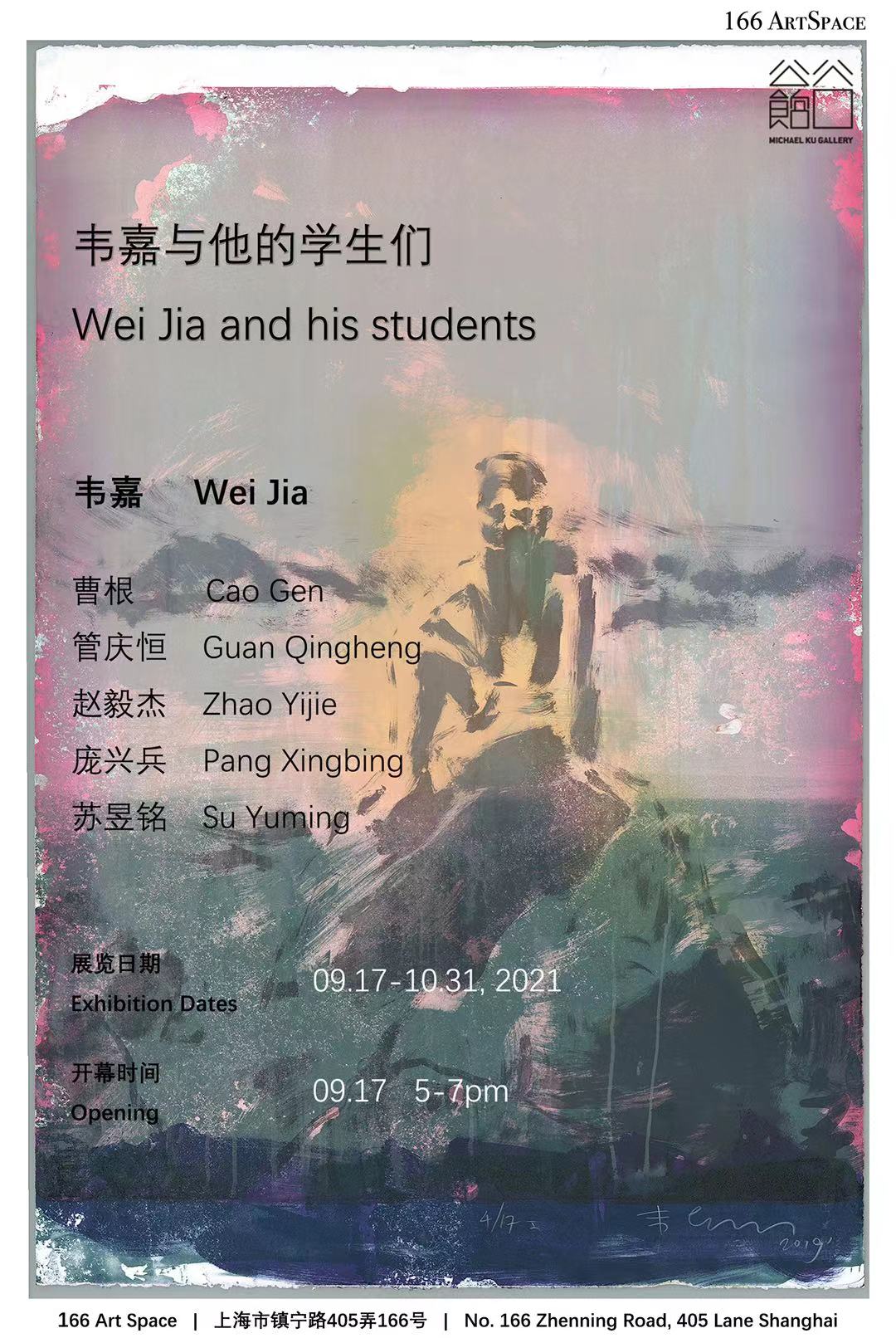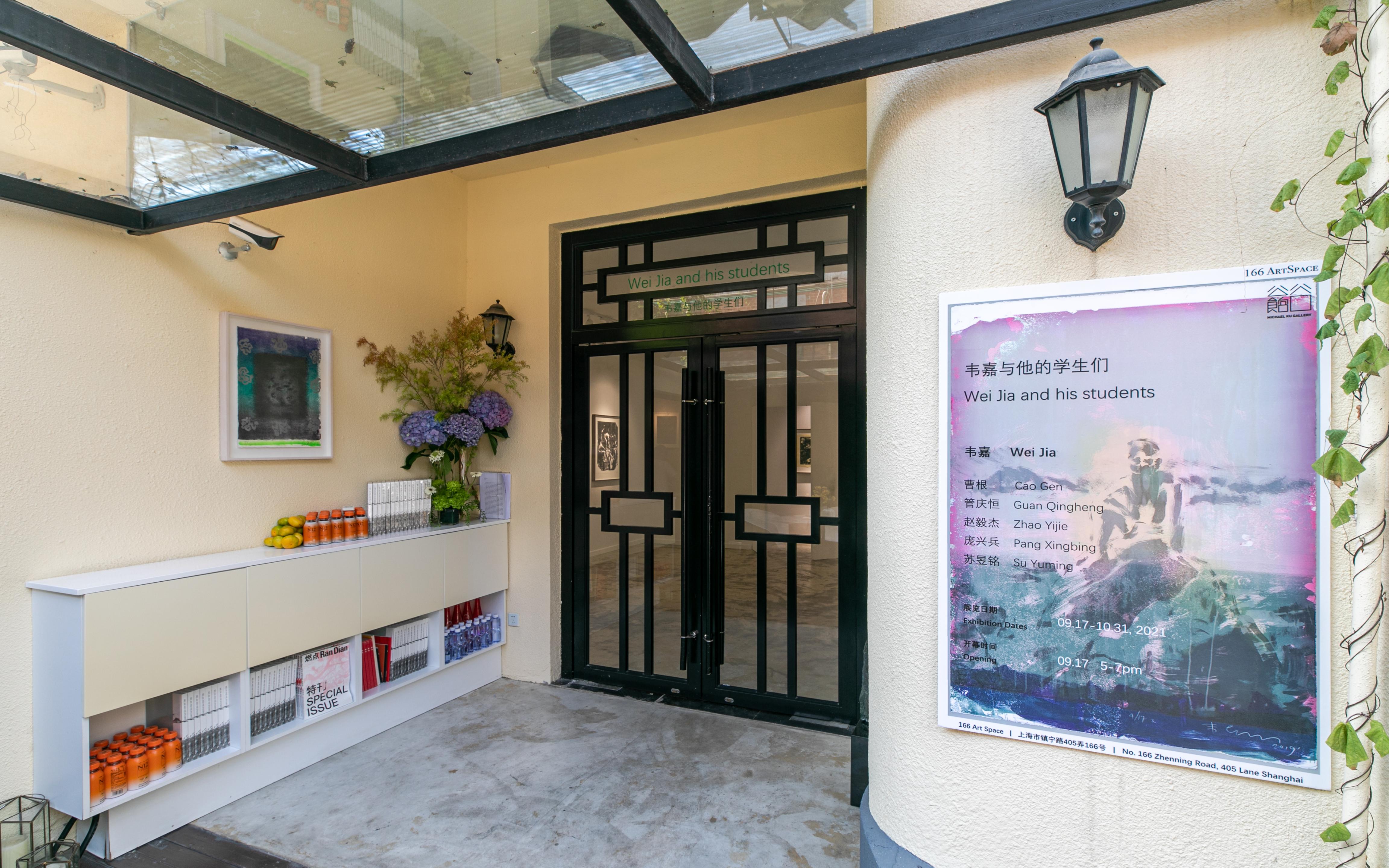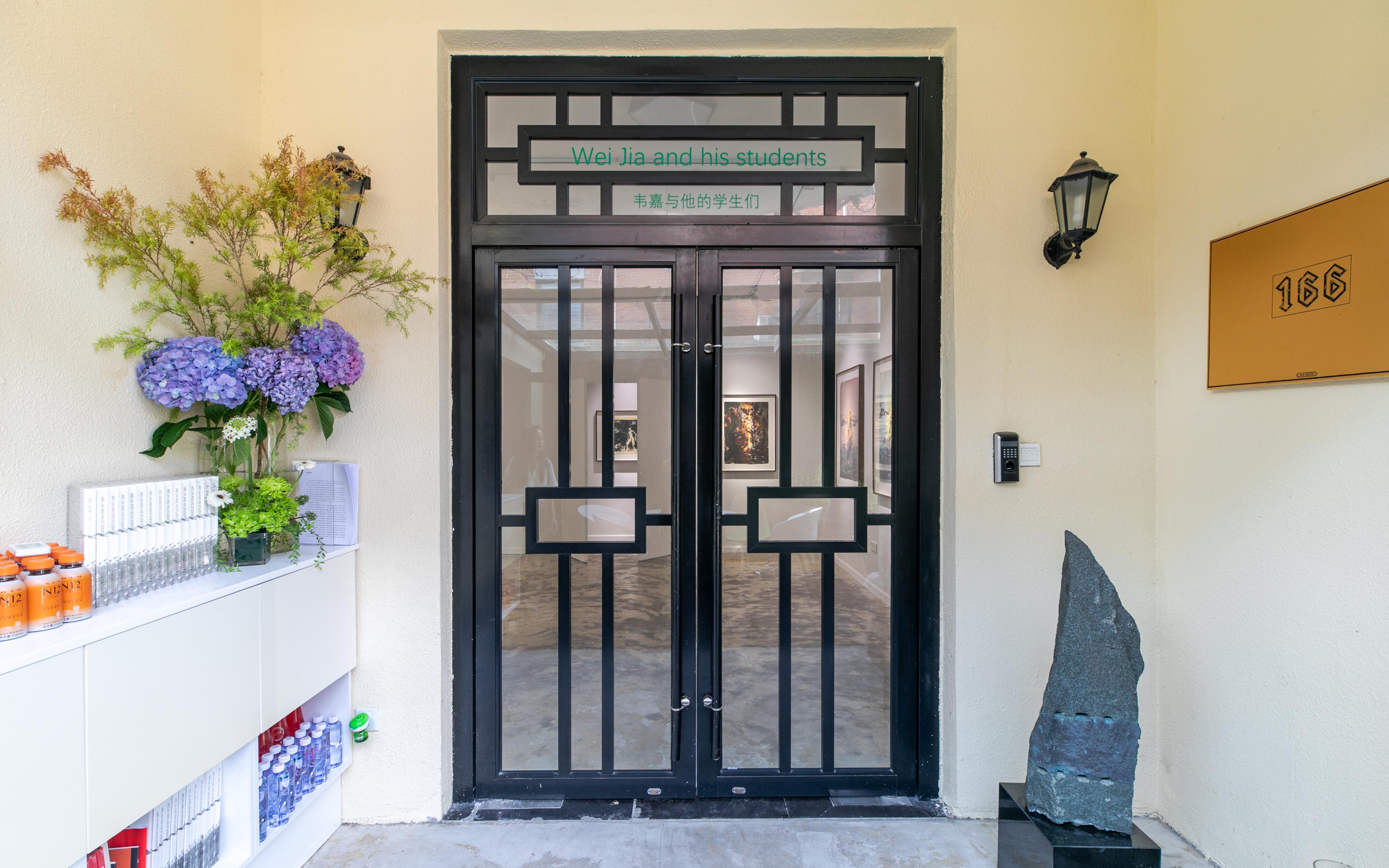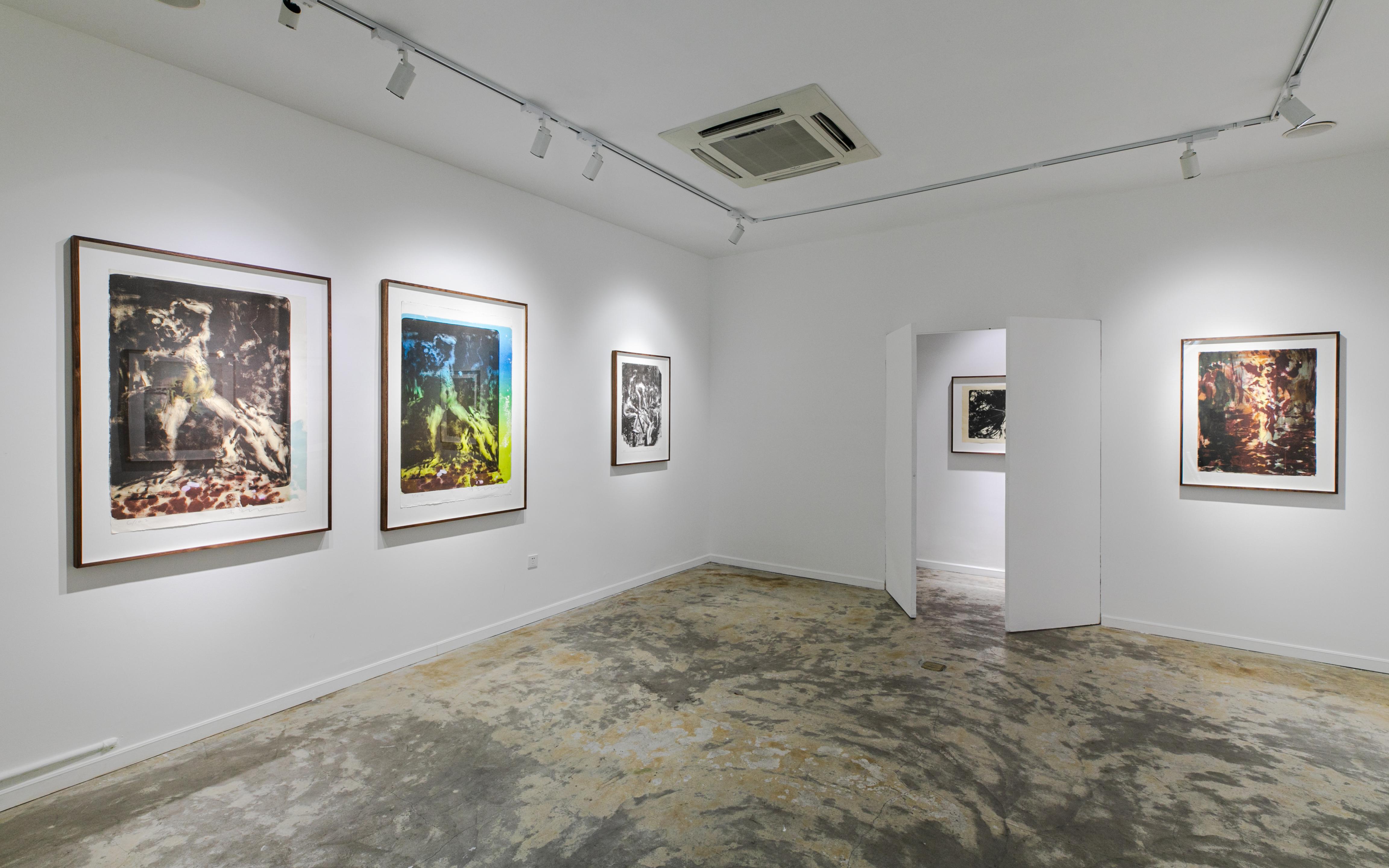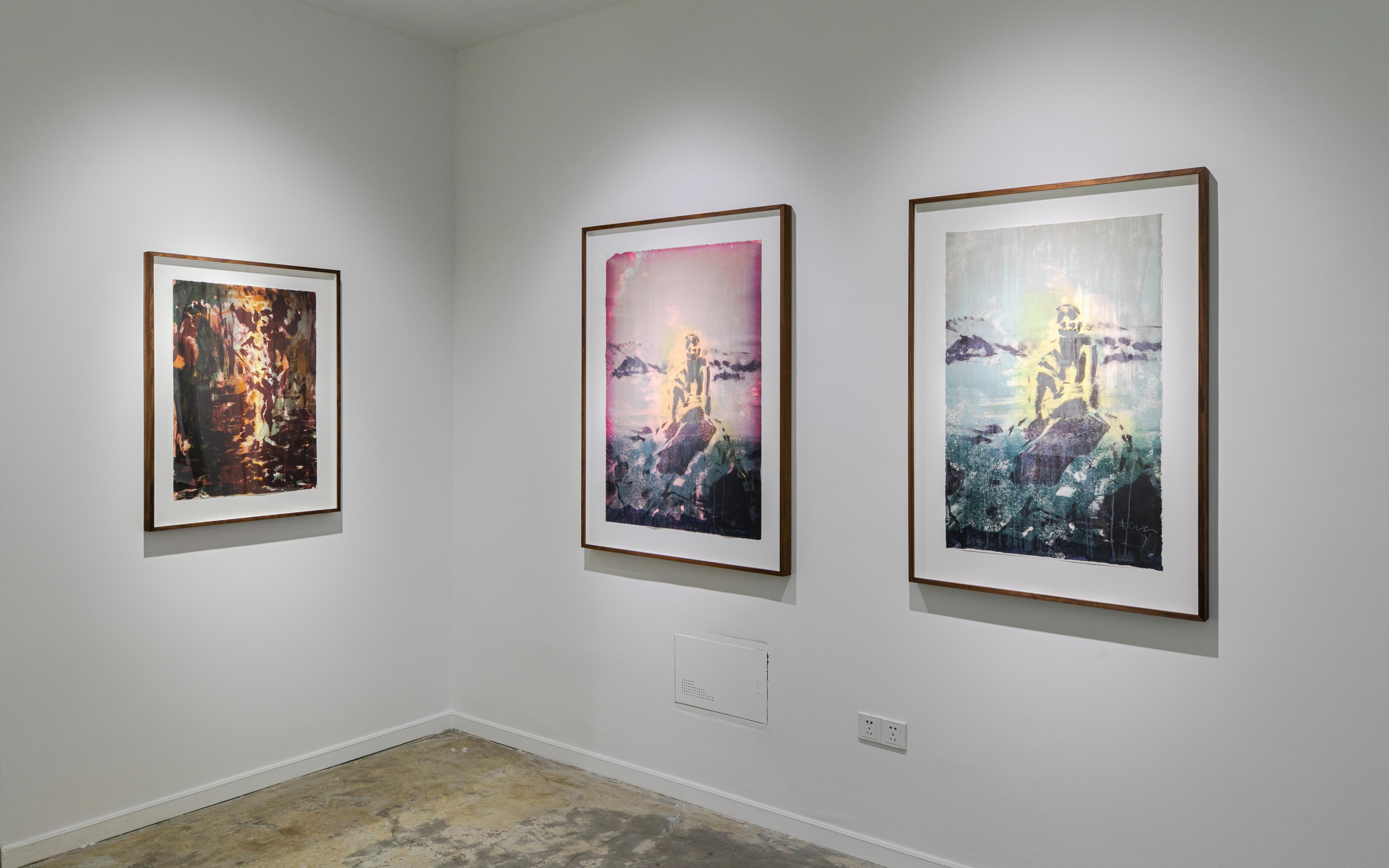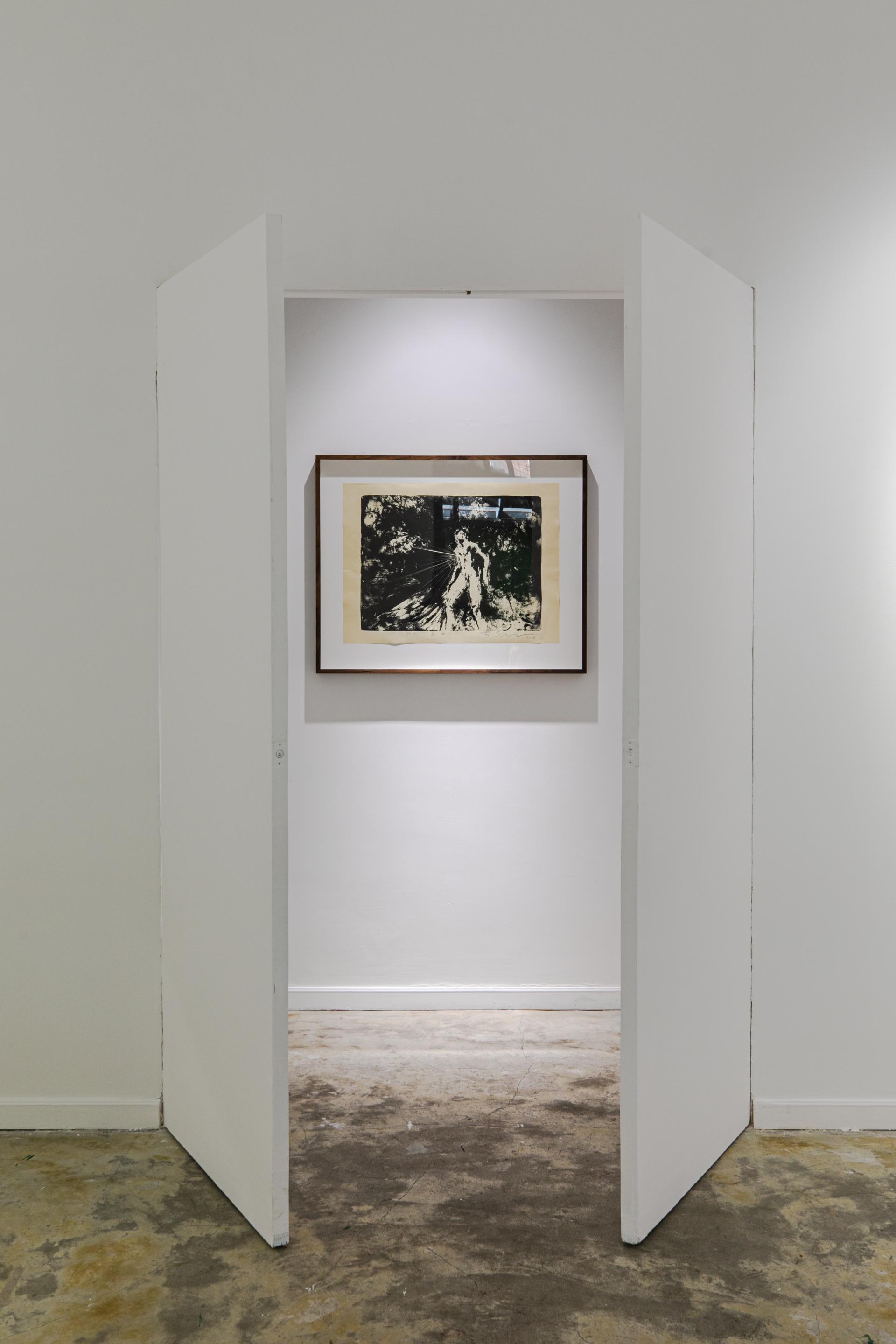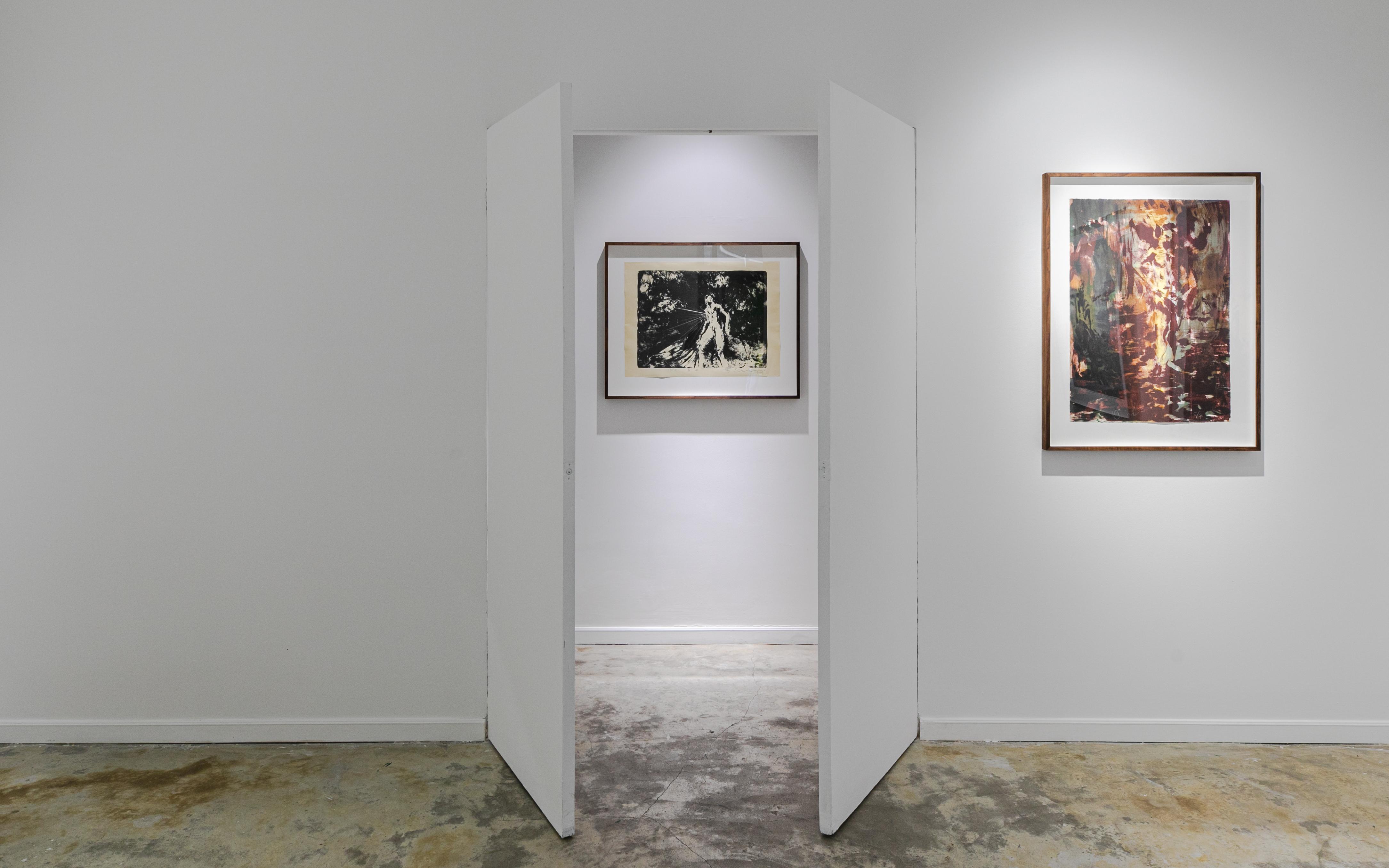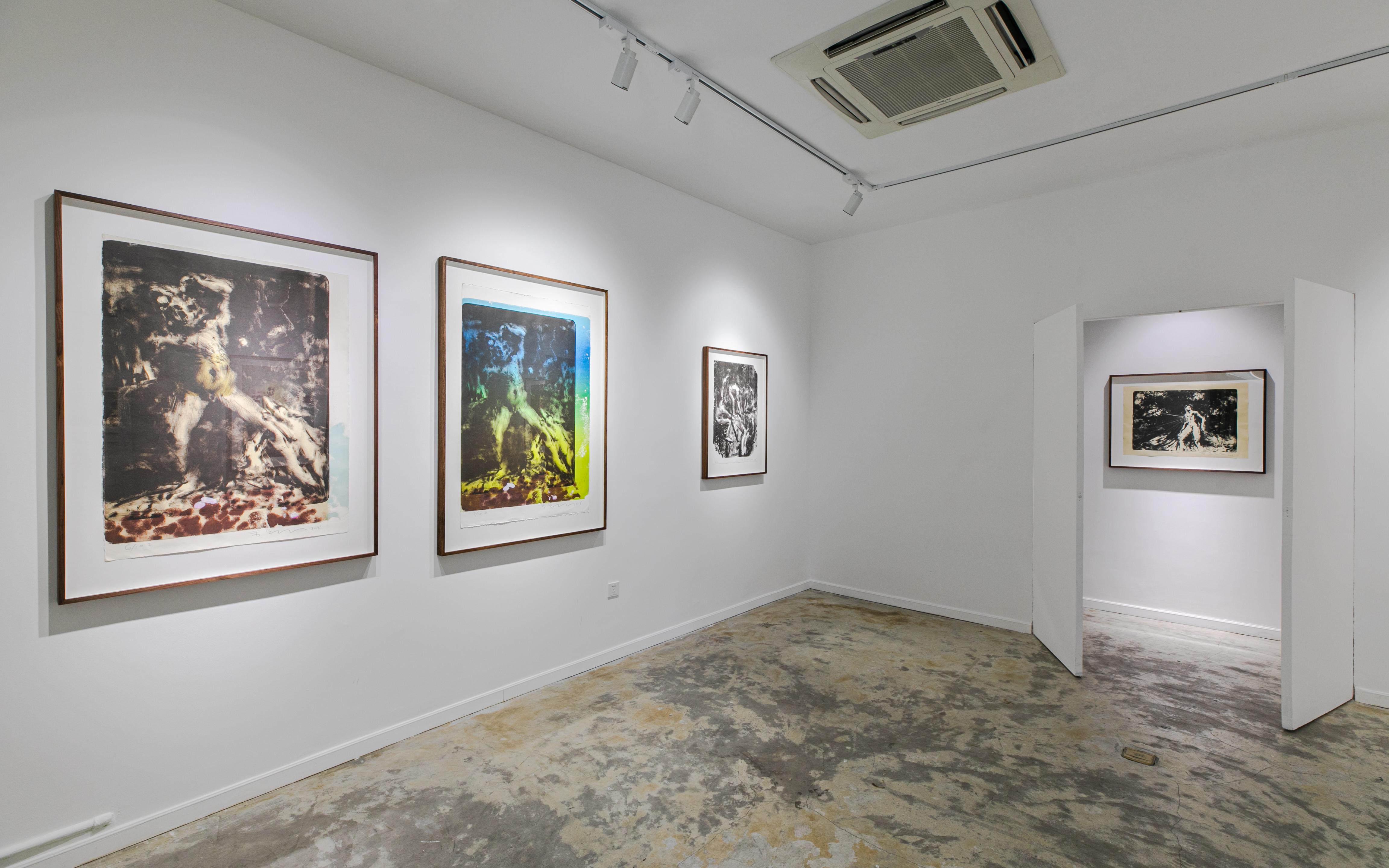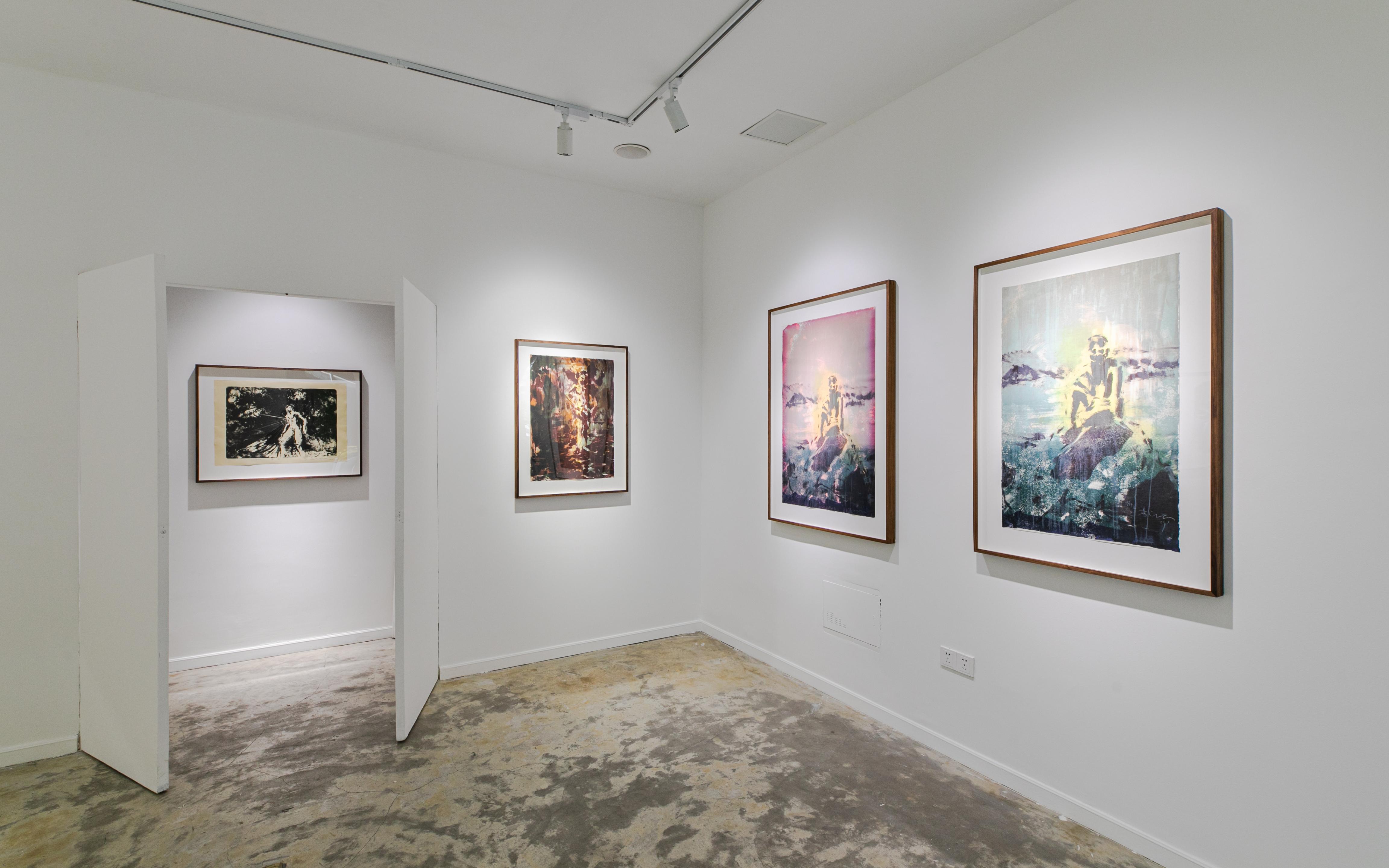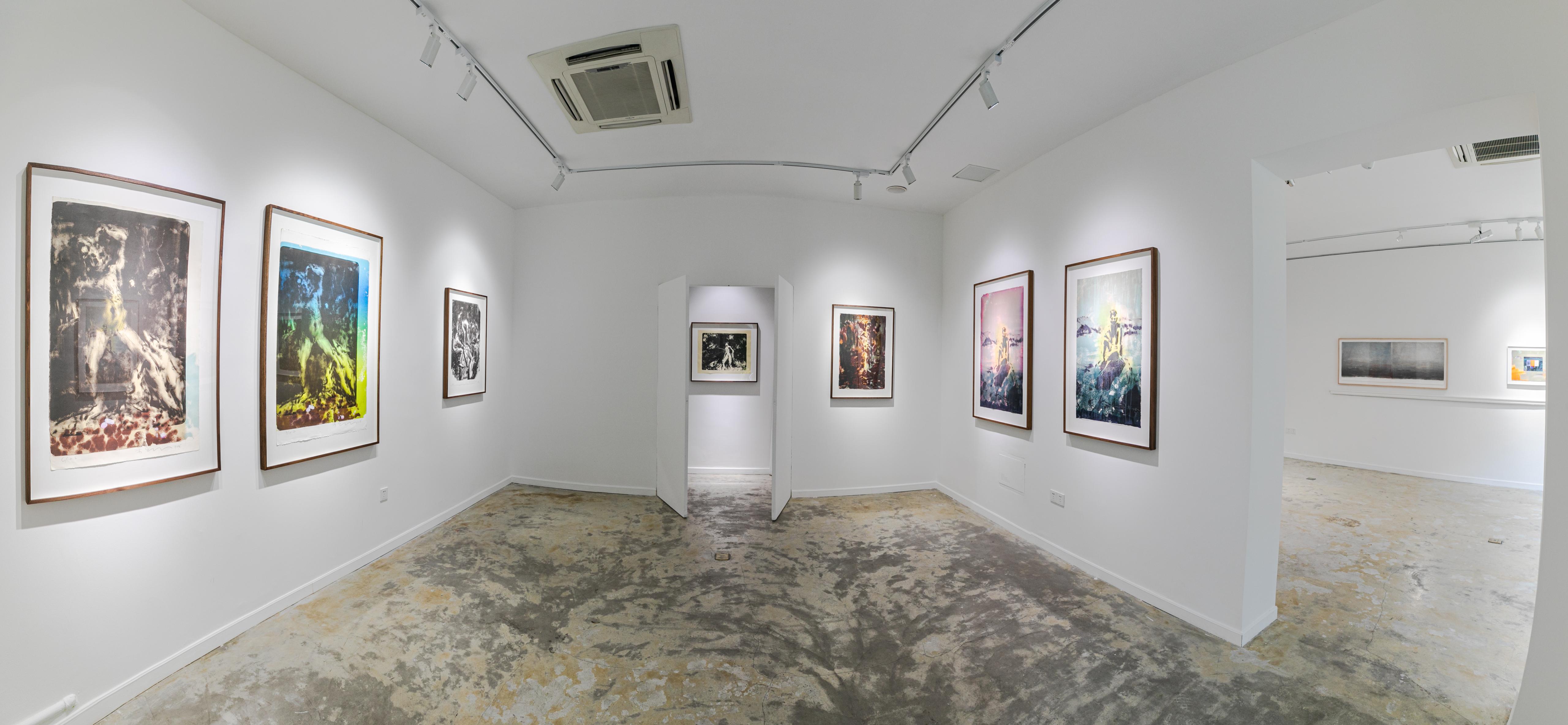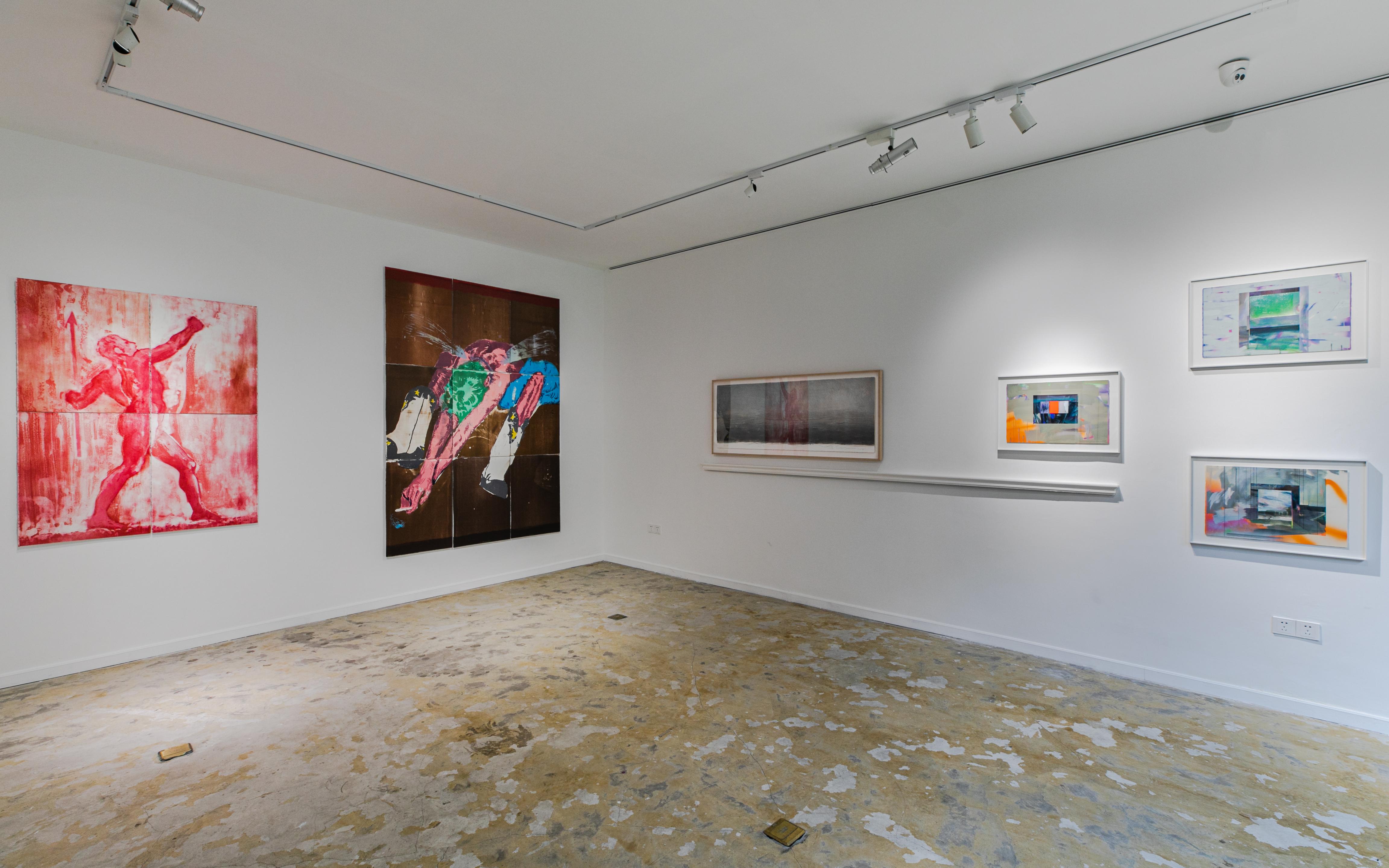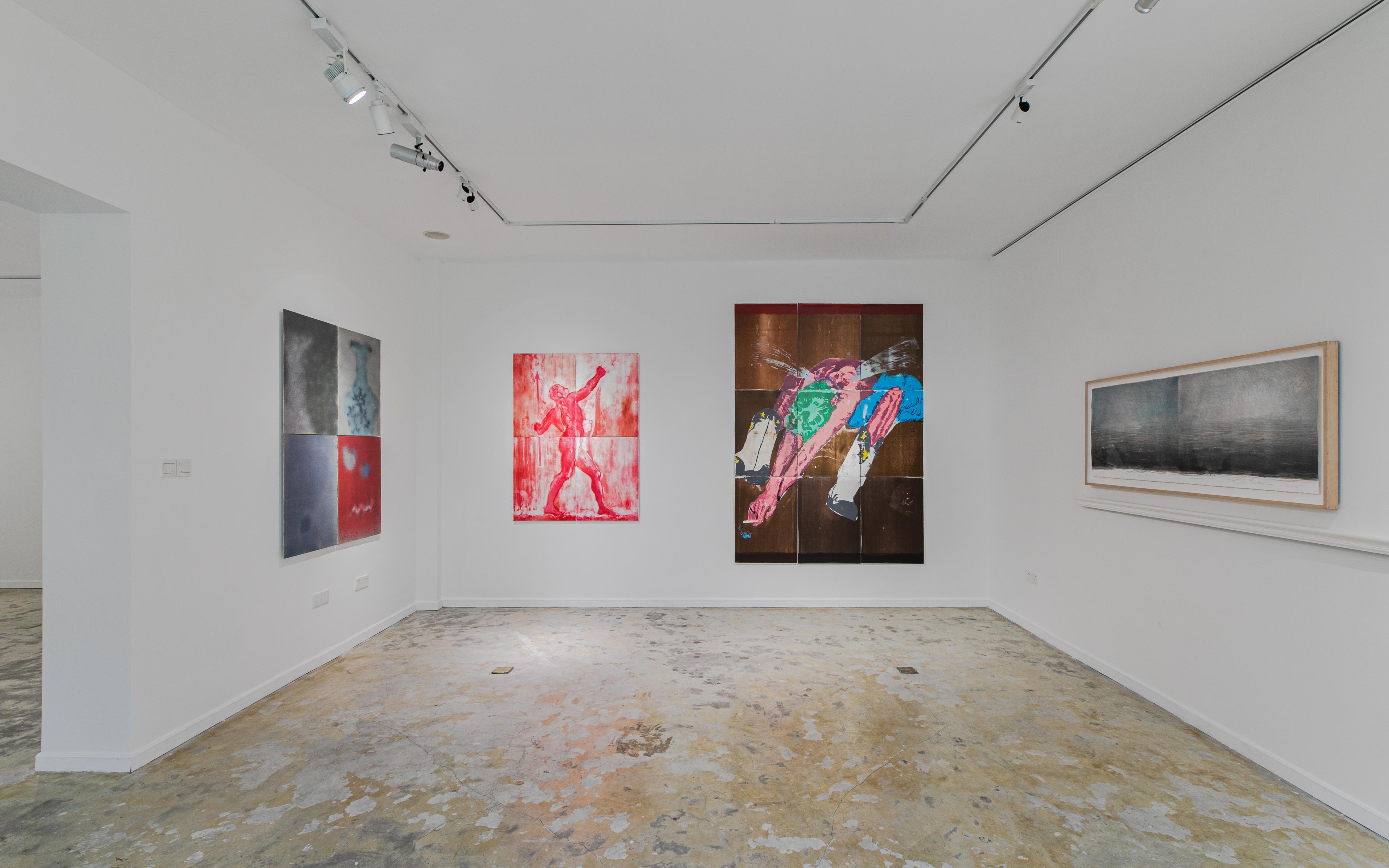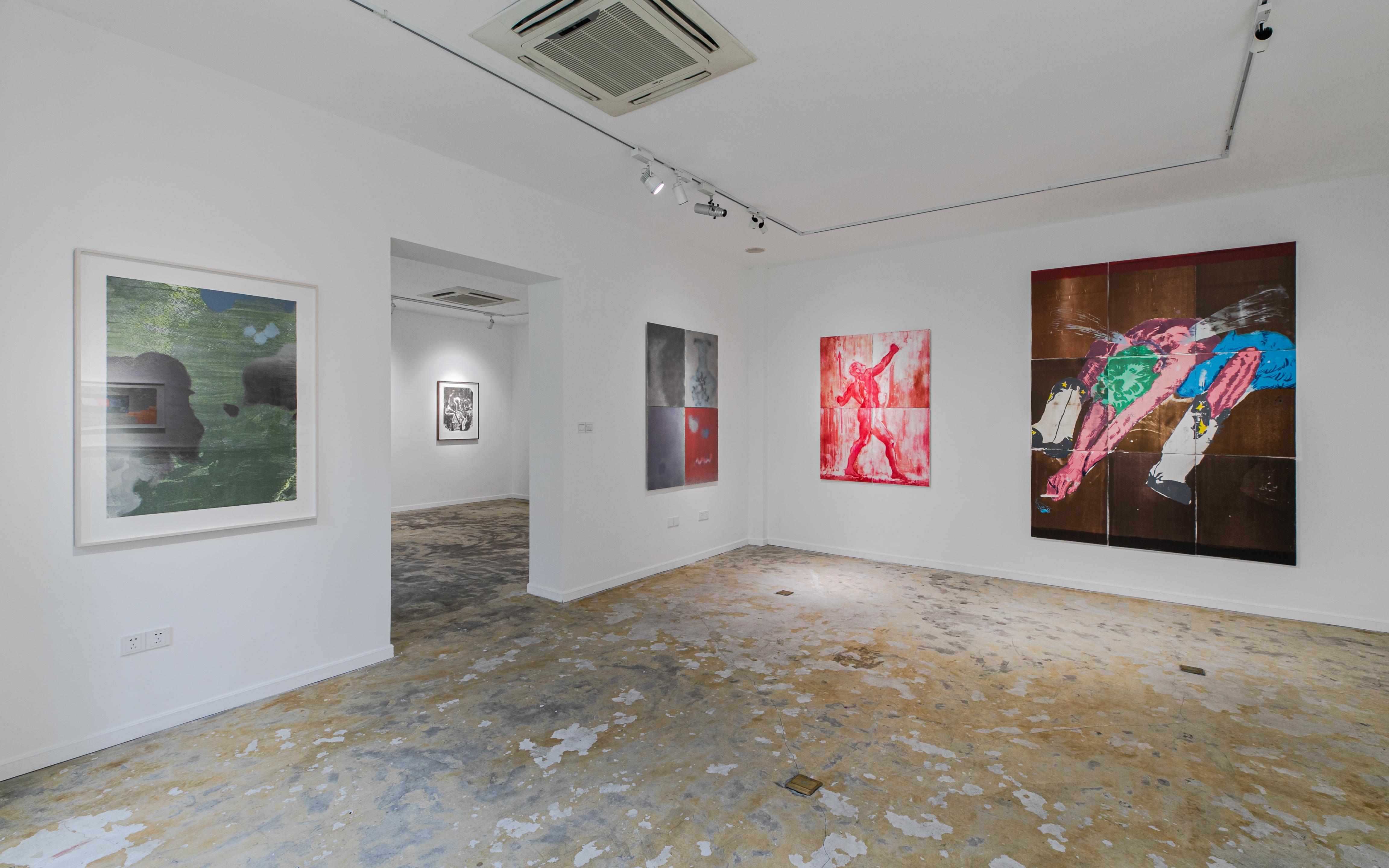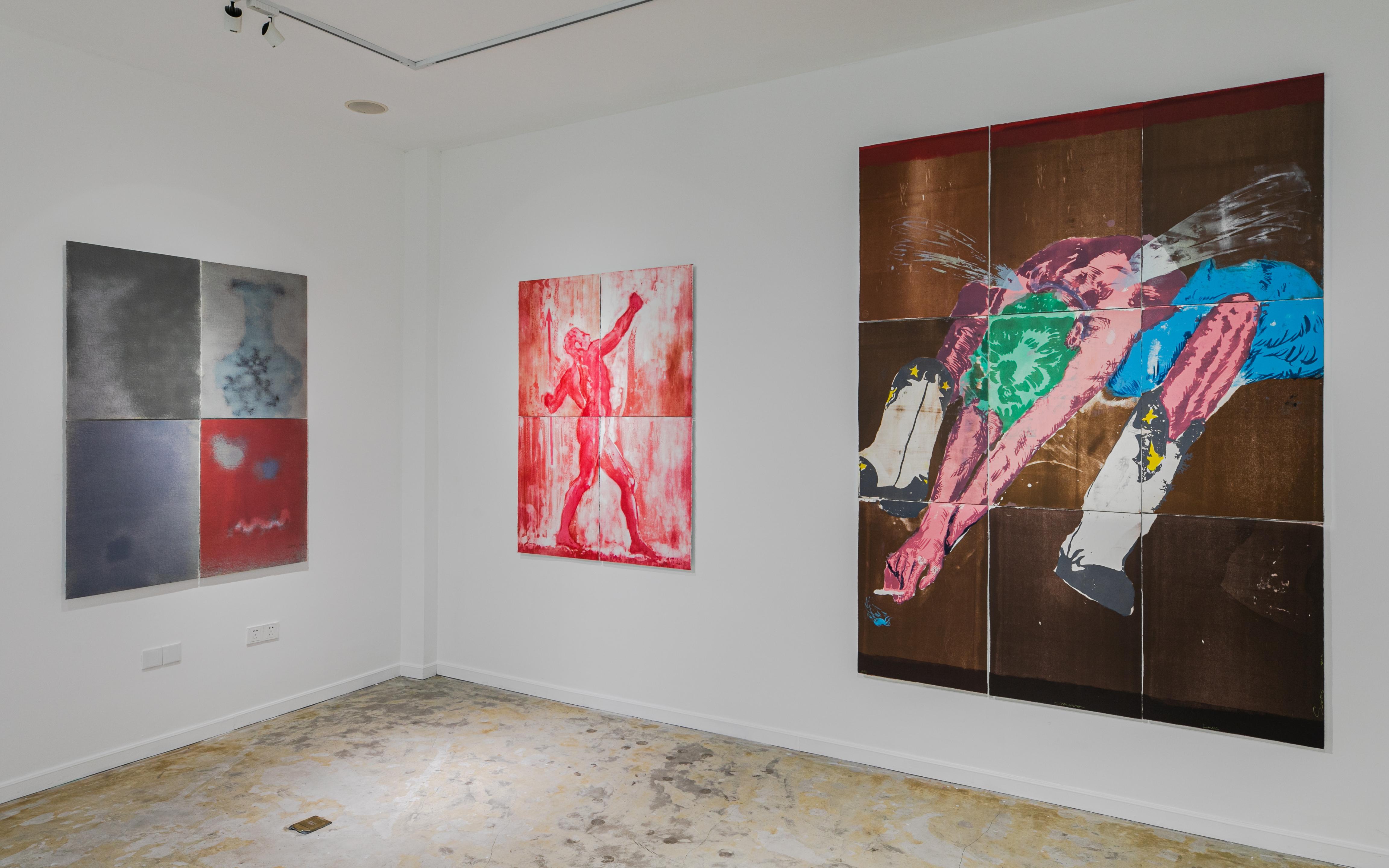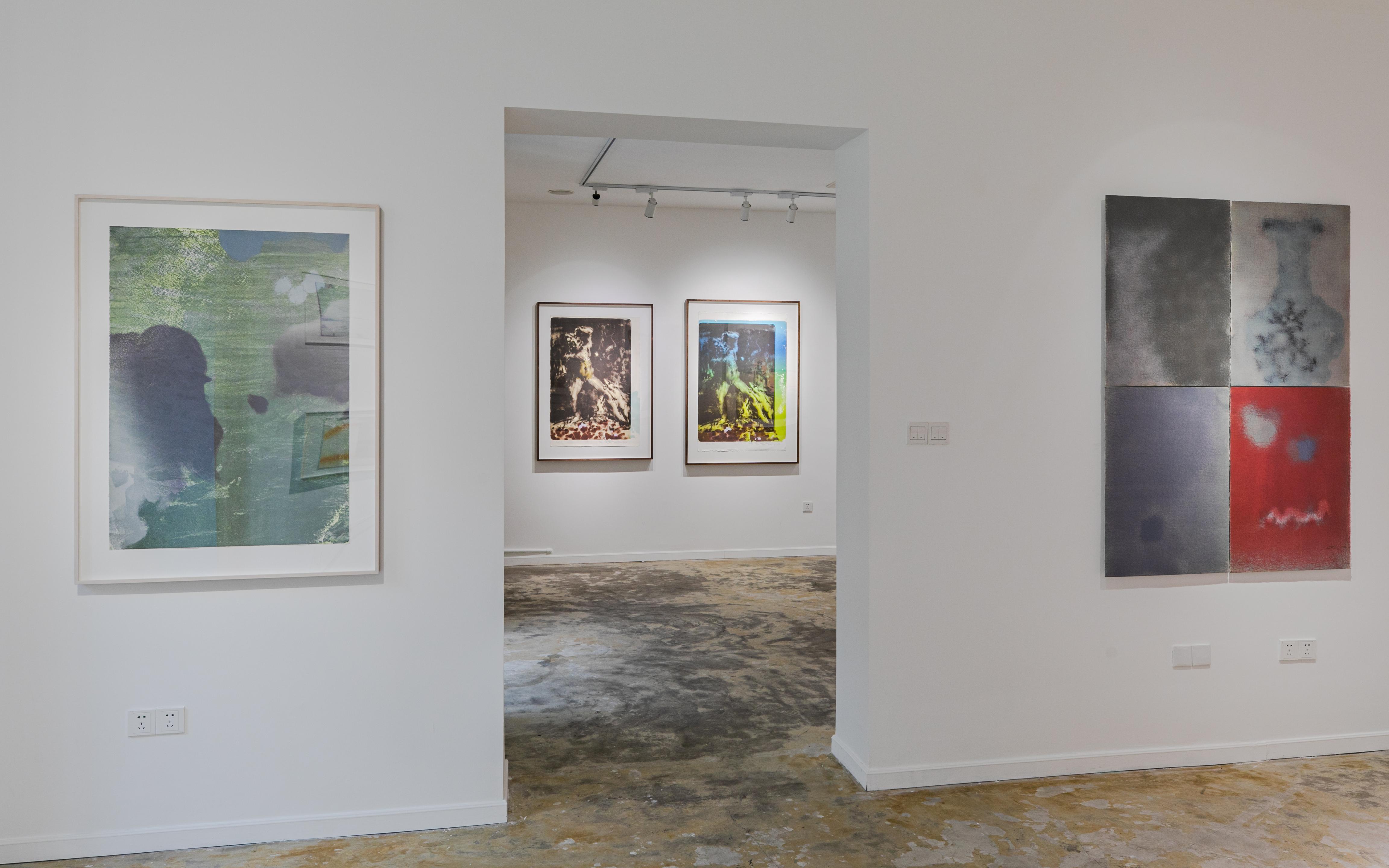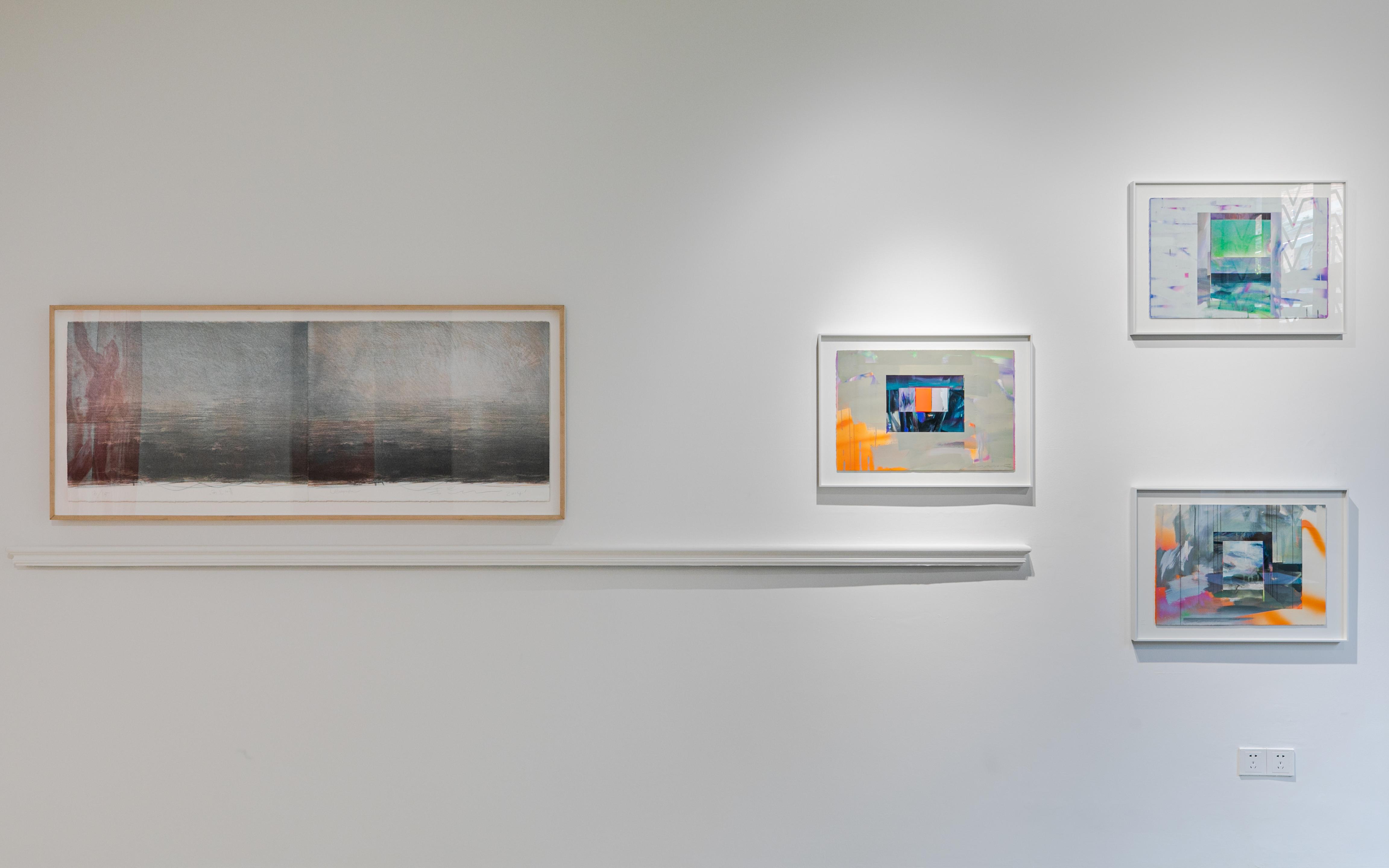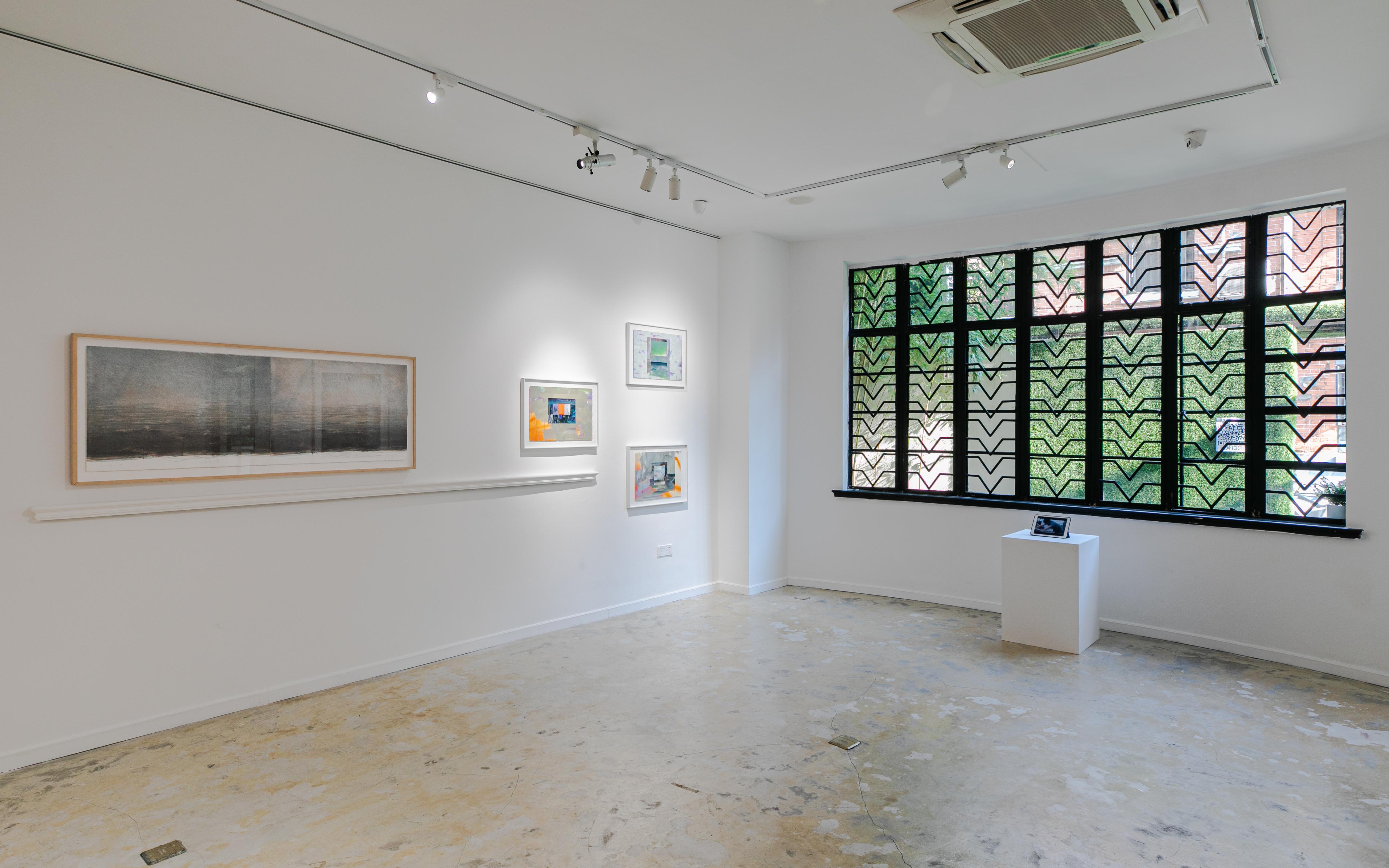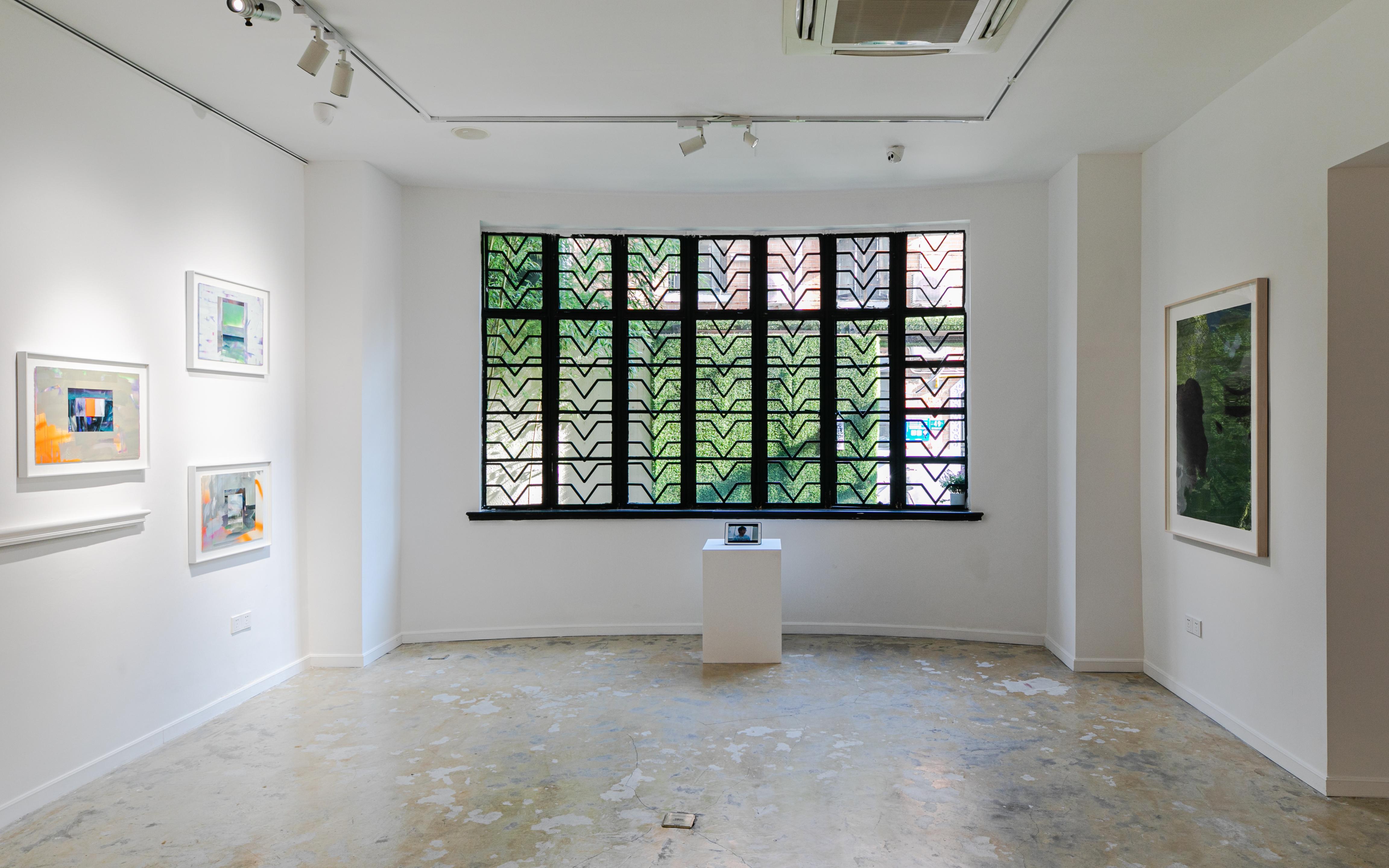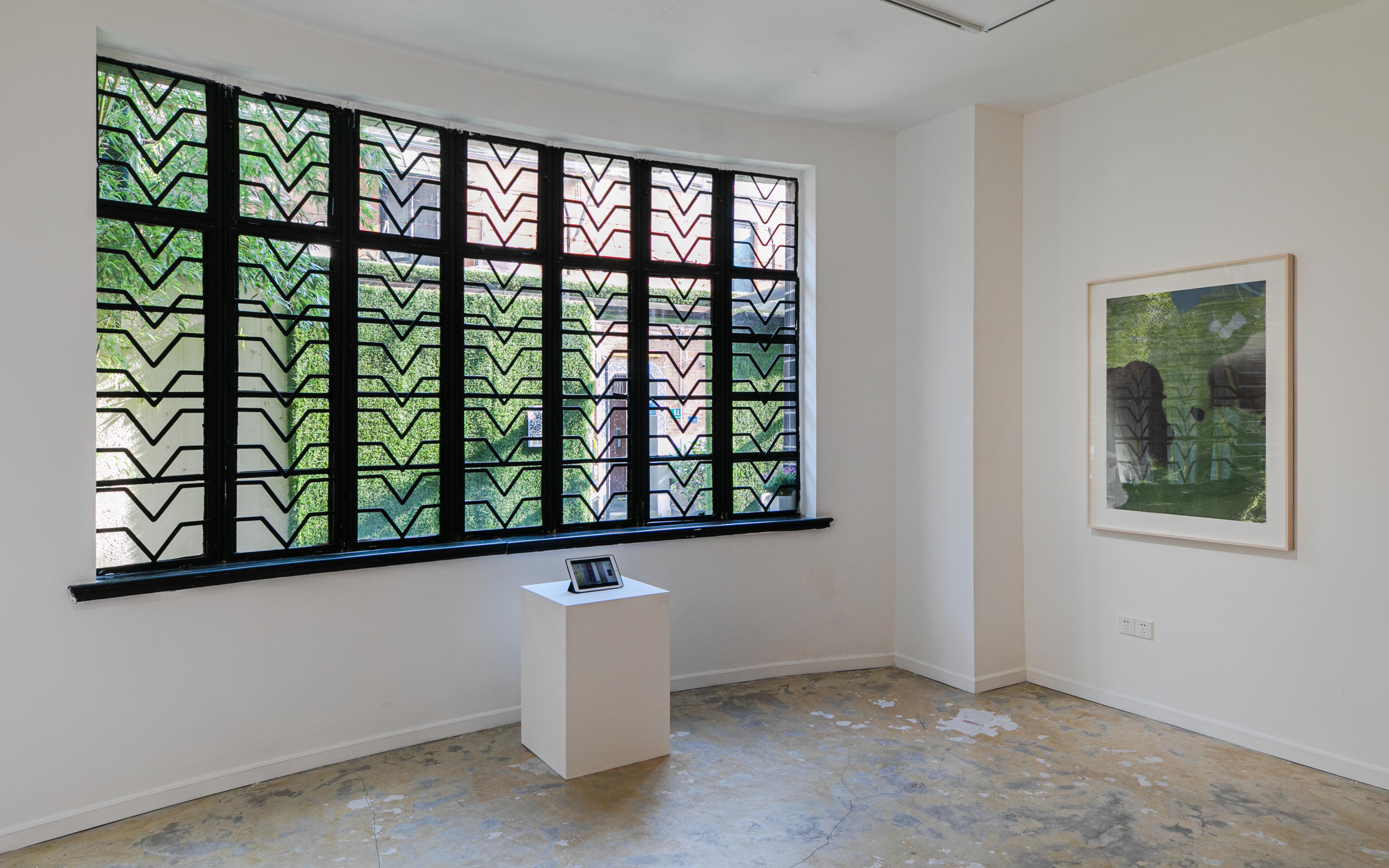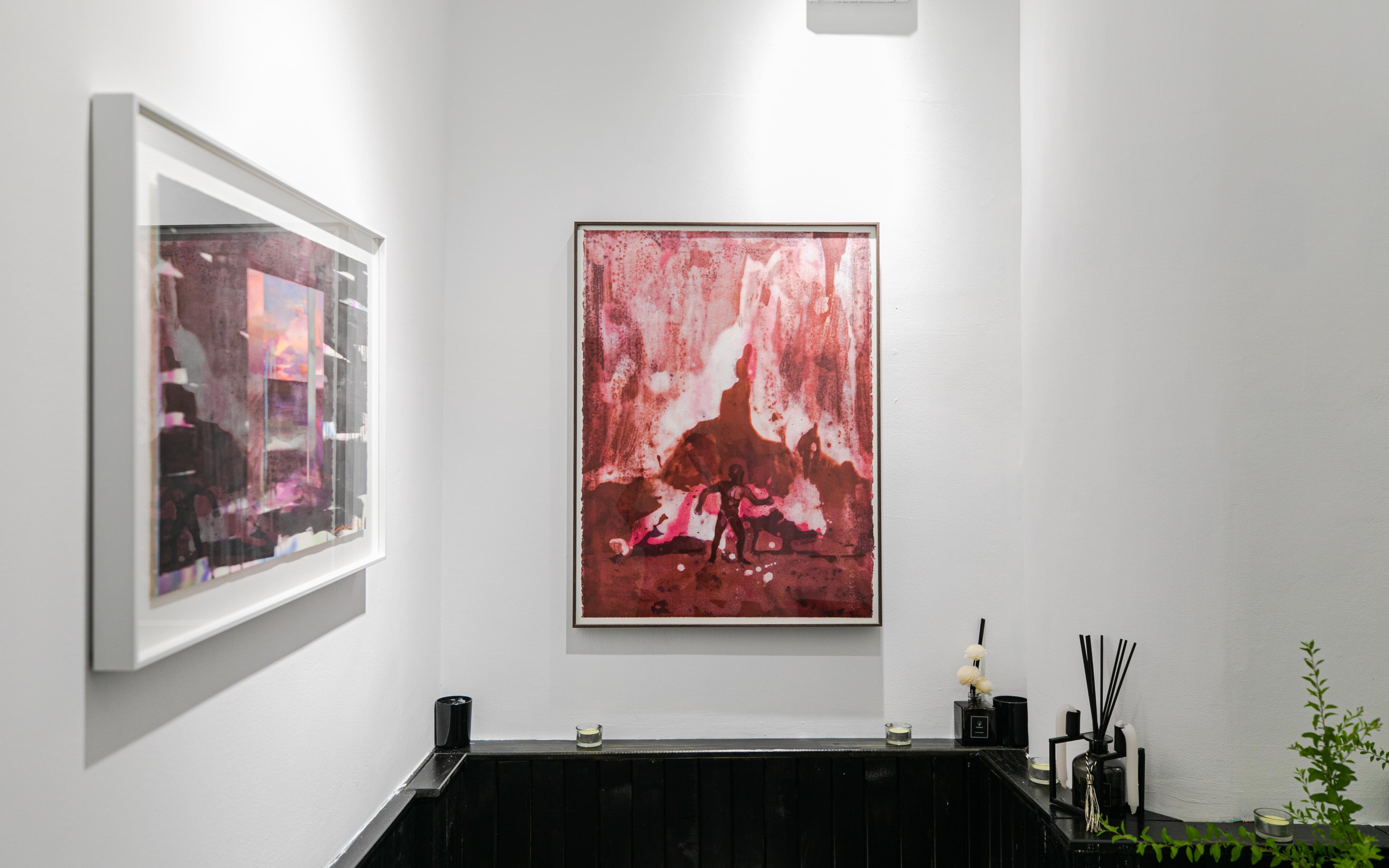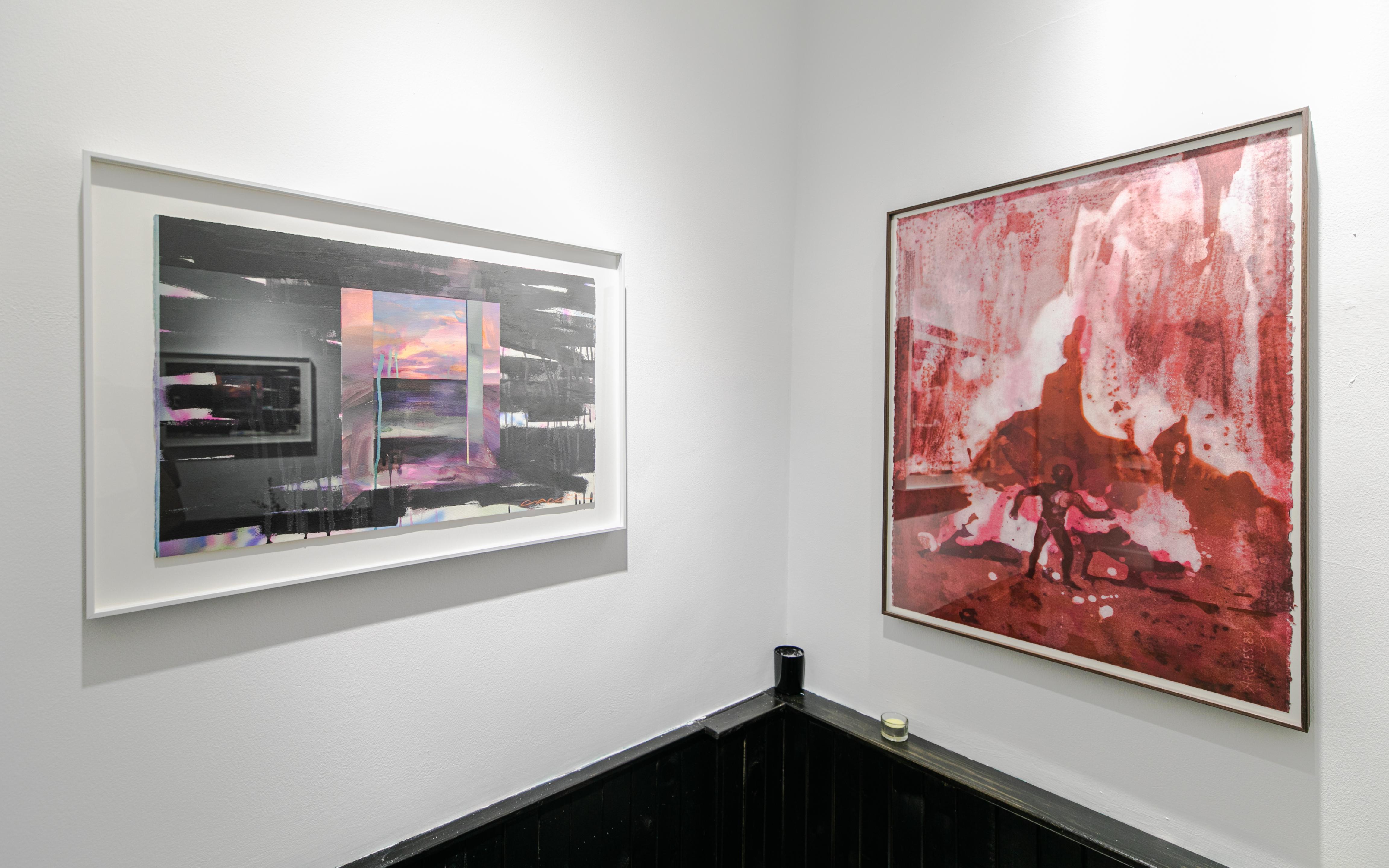“Wei Jia and His Students” is the first exhibition exclusively dedicated to Wei Jia’s print works, featuring eight latest prints created since 2014. The exhibition will also showcase the works of five of Wei’s students from the Sichuan Fine Arts Institute Printmaking Department. The works by the mentor and his proteges were often created together in the lithography studio and are manifestations of educational legacy.
Any investigations on Wei Jia’s paintings would be incomplete without discussions on the artist’s prints. In 1999, Wei Jia graduated from the Central Academy of Fine Arts Printmaking Department and dedicated his efforts to lithography. Lithography requires intensive effort and skill, and the genre sets the foundation for the artist’s career. In the same year, Wei Jai returned to the Sichuan Fine Arts Institute for a teaching position and continued with his exploration of lithography. Starting in 2001, Wei was awarded gold prizes at national prints competitions for three consecutive years for Language of Birds, Superman, and Amusing Ourselves. The works depict the earliest temperament of Chinese artists born in the 1970s, which adopted a cool, distanced stance when observing the world. Wei’s acute sensibility towards color was first embodied in his prints; he used pastel pink, purple, and grey-toned blue to create scenes that resembled fog and wind, while the unique texture of lithography conveyed serenity in the penetrating and reflective nature of light. Sometimes, Wei would tackle lithography through the strict context of tradition; other times, he would treat it as a completely different medium. In 2004, Wei challenged the size of his works by painting largescale, mounted works with acrylic. As for the transition stage, Wei’s paintings were impacted by unique compositions and thin-coated brushwork.
Ten years later, in 2014, Wei Jai took up lithography once again, this time returning from painting. The brushwork of After the Rain the Sun Breaking Through embodies characteristics that were unseen in his previous lithography works, conveying an effortless, Eastern expression. Lithography creates planes through points, which can now be completely replaced with lines. In other words, Wei discovered a creative trajectory that was similar to drawing in the logic of printmaking. Either using acrylic on canvas or lithography, Wei is able to manifest his beliefs in painting: capturing the deepest imageries through the simplest brushwork. Wei’s works are not entirely abstract, nor are they figurative; instead, they display new possibilities for modern Chinese painting. Some works showcase robust grandeur; for instance, Untitled, with blue-green and brown-black versions, feature a figure resembling Laocoön, which seems like a distant Fellini myth and the glamour of the Han and Tang dynasties. Some of Wei’s works portray composure, such as the swimmer resting by the water and ready to take off in Lasting as the High Mountains and Long Rivers. Presented in red and blue, the colors of the work catch the attention without being boisterous. The tones of these works can be seen as the style of middle-aged artists who were born in the late 70s and their comprehension of society or the color of China in the 21st century.
In 2016, Wei Jia and his students attended an exchange with Tokyo University of the Arts prints workshop, which gave birth to collaborative work Kasai, a painting of a young man. In 2018, Wei attended an exchange with the Royal Academy of Fine Arts Antwerp in Belgium; his Untitled showcases bathers supporting each other on the shore, exuding a sense of balance and stability. On most occasions, Wei would create works with his students in the Sichuan Fine Arts Institute prints workshop. The works of five students are featured in this exhibition. Among them, Zhao Yijie, Pang Xingbing, and Guan Qingheng have completed their graduate studies. Zhao Yijie and Pang Xingbing remain in the school as teachers, while Guan Qingheng took up a teaching position at the Guizhou University of Commerce. Cao Gen and Su Yuming have completed their undergraduate studies; Cao continues to work with Wei, and Su is pursuing further education in printmaking at the Central Academy of Fine Arts graduate school. These students are diligent in perfecting their craft and are often seen hard at work, with their backs hunched in the studio. Each student has developed their own style: Zhao Yijie is known for his delicate renderings of the texture of lithography; Pang Xingbing’s works are embodiments of his pursuit of eternal value, showcasing nature that seems to discard all materialistic desires; the new, purple flame in Guan Qingheng’s mind seem to burn with everlasting rigor; Cao Gen’s works are portals to a world that exist between reality and ideal, while Su Yuming’s works are more realistic, highlighting his determination of surviving in the world.
“Wei Jia and His Students” is not a rowdy exhibition. Lithography is, at its nature, a creative medium known for its retrained and humble quality, which seems to contradict our current preference for fast and appealing visuals. However, lithography requires enormous strength, created through repeated rolling and rubbing heavy stones. Just like the stone that makes the printing plate, quality stones breathe and allow appreciation for extended time frames; Wei’s bond with lithography, his creative approach, and his mentality as an educator, also show similar traits. A 10-minute documentary capturing the entire production process of Lasting as the High Mountains and Long Rivers will be presented alongside the works of the exhibition. Over 20 years into his artistic career, Wei is presenting a 4,500-word essay, “Along the Way,” sharing his learning and experiences as both creative and educator with straightforward wording. At the end of the day, Wei Jia is a painter; and therefore, his writings do not attempt to interpret his works but are merely documentation and records of his creative journey.
Michael Ku, July 31, 2021
「韦嘉与他的学生们」是韦嘉创作生涯第一次全版画展览,呈现自 2014 年以来最新创作的八件石版作品。尤具意义的是,展览同时与韦嘉四川美院版画系五位学生共同展出。师生联展,也常常是师生在石版画工作室内同时创作,教育传承里流出活力的泉水。
谈韦嘉的绘画,必须先从版画谈起。1999 年韦嘉于中央美院版画系毕业创作,刻苦钻研石版。石版的特质,面对特质所需的基本功,都不能马虎,这是他最初的基底。同年,韦嘉回川美任教,继续深入石版,2001 年起,连三年获得全国性版画金奖:《鸟语》、《Superman》、《都是娱乐》,在画面里传递出中国七零后一代最早的艺术气息,一种在个人世界中冷静观察世界的眼神。韦嘉的色感是他的天赋,也在最早的版画创作里透露出来,带着中间色彩的粉红、粉紫、灰蓝色,像雾像风,以石板独特的颗粒性质表达了光影投射在时间中静谧的穿透性。有时将石版以最严格的传统来讨论,有时则不把石版当石版看。2004年,韦嘉挑战尺幅表现更大的架上压克力绘画创作。过渡阶段,石版特有的构图造型及薄涂绘笔,影响韦嘉绘画。
十年后,2014 年,韦嘉重拾石版,这次是绘画渡回石版。《雨见晴》书写性的笔意,是从前石版创作没有过的,甚至是一种不着痕迹的东方式的表现。石版以点而成面,现在可以完全以线取代。也就是,在版画制作逻辑的规则中,发展出如同绘画般的新方向。此时,韦嘉无论在布面丙烯或石版,都能一致发展他在绘画所求的理念:以最简的笔法,达到深刻的意境。不完全是抽象,也不完全是具象,那是中国在现代绘画的一种可能。也有气力万钧的时候,例如取名《无名》而画面造型似劳孔者,蓝绿与棕黑各一张,像远至费里尼的神话,也是汉唐的繁华。也有沉着笃定的时刻,例如《山高水长》在江河边歇息待发的泳者。一红一蓝,艳亮而不喧。那气息是七零后中年艺术家与社会合在一起的色彩,也许也是中国在 21 世纪的色彩。
2016 年,韦嘉与学生至东京艺术大学版画工作室交流,学生做,老师也做,一个青年的画像《葛西》就在此时完成。2018 年到比利时安特卫普皇家艺术学院交流,韦嘉在《无名》里描绘岸边相互拉拔的浴者,画面呈现动态中稳定的平衡。更多时候,韦嘉就是在川美版画工作室,与学生一同创作。此次展览的五位学生,赵毅杰、庞兴兵、以及管庆恒,已自研究生毕业,赵毅杰、庞兴兵留校任教师,管庆恒至贵州商学院任教。曹根与苏昱铭从本科毕业,曹根继续跟随韦嘉读研,苏昱铭则到中央美院版画系研究所深造。这些学生们,在技术上没人肯荒废,工作室里无时无刻总是他们弯着腰的背影。在风格上他们有了各自的面貌:赵毅杰把石版中石头颗粒呈现的分子琢磨得那么温润有情;庞兴兵追求一种永恒不变的价值,像把所有物质欲望皆舍弃后的自然文明;管庆恒心中的柴火像是刚开始燃烧而不止;曹根开了扇介于现实与理想国度的风景;而苏昱铭最入世,有他在凡尘世界里碰撞的决心。
「韦嘉与他的学生们」不是一个喧哗的展览。本来,石版就是一种在外貌上更谦卑内敛的艺术媒介。这看似与今日快速而讨喜的视觉表像抵触,可是,石版是用巨大的体力,沉重的石头,多少次下足了手劲反复滚动印刷而能完成的作品。如制版的石头一样,好的石头似乎能亘久的呼吸与赏玩。韦嘉与石版有缘,他在艺术创作上的态度,作为教育者上的态度,也是如此。这个展览,制作了一段十分钟的纪录片,刚巧是作品《山高水长》从开始到结束的制作过程,做为介绍石版画制作的解说示范。韦嘉在超过20年版画创作的今天,写下关于版画创作者与艺术教育者并重的文字「步履处」。文中将近4500字的篇幅,大概是以最白的白话,说出他以为比较重要的体悟。韦嘉还是个画画的人,他的文字不试图使作品加分,只是把记事本般的创作心得,在此刻厘清楚,记录出来。
谷浩宇,2021 年 7 月 31 日

